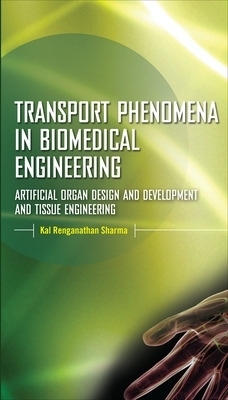
Transport Phenomena in Biomedical Engineering: Artificial organ Design and Development, and Tissue Engineering
McGraw-Hill Professional (Verlag)
978-0-07-166397-7 (ISBN)
- Titel z.Zt. nicht lieferbar
- Versandkostenfrei innerhalb Deutschlands
- Auch auf Rechnung
- Verfügbarkeit in der Filiale vor Ort prüfen
- Artikel merken
Publisher's Note: Products purchased from Third Party sellers are not guaranteed by the publisher for quality, authenticity, or access to any online entitlements included with the product.
A Cutting-Edge Guide to Applying Transport Phenomena Principles to Bioengineering SystemsTransport Phenomena in Biomedical Engineering: Artificial Order Design and Development and Tissue Engineering explains how to apply the equations of continuity, momentum, energy, and mass to human anatomical systems. This authoritative resource presents solutions along with term-by-term medical significance. Worked exercises illustrate the equations derived, and detailed case studies highlight real-world examples of artificial organ design and human tissue engineering.
Coverage includes:
Fundamentals of fluid mechanics and principles of molecular diffusion
Osmotic pressure, solvent permeability, and solute transport
Rheology of blood and transport
Gas transport
Pharmacokinetics
Tissue design
Bioartificial organ design and immunoisolation
Bioheat transport
541 end-of-chapter exercises and review questions
106 illustrations
1,469 equations derived from first principles
Dr. Kal Renganathan Sharma PE (Prairie View, Texas) received his BTech in chemical engineering from Indian Institute of Technology, Chennai, India and MS and PhD in chemical engineering from West Virginia University, Morgantown. He spent two terms at the department of computer science at Dartmouth College and some time under Ramana Reddy, Director of Concurrent Engineering Research Center, West Virginia University, Morgantown. His postdoctoral research work was with R. Shankar Subramanian, formerly chair and professor, chemical engineering at Clarkson University. He performed some probabilistic modeling while he was at Monsanto Plastics. Dr. Sharma has authored 5 books, 10 journal articles, 440 conference papers, 53 preprints, 37 invited lectures/seminars, and 21 others. He developed the curriculum and syllabus for the M.Tech. in Bioinformatics program when he served as Professor and Head of Department at Vellore Engineering College, India. Dr. Sharma has held a number of other positions including: Principal, Sakthi Engineering College, Chennai, India; Professor, SASTRA University, Thanjavur, India; President, Independent Institute of Technology, Hanover, NH; Adjunct Assistant Professor, Mechanical & Aerospace Engineering, West Virginia University, Morgantown; Visiting Research Assistant Professor, Applied and Engineering Statistics, George Mason University, Fairfax. He has instructed more than 1500 students. Dr. Sharma is currently Adjunct Professor with the college of engineering at Prairie View A & M University.
Chapter 1. Fundamentals of Fluid Mechanics; Chapter 2. Principles of Diffusion; Chapter 3. Osmotic Pressure, Solvent Permeability, and Solute Transport; Chapter 4. Rheology of Blood and Transport; Chapter 5. Gas Transport; Chapter 6. Pharmacokinetic Study; Chapter 7. Tissue Design; Chapter 8. Bioartificial Organ Design; Chapter 9. Bioheat Transport; Appendix A. Generalized Bessel Differential Equation; Appendix B. Inverse of Laplace Transforms
| Zusatzinfo | 90 Illustrations |
|---|---|
| Sprache | englisch |
| Maße | 163 x 236 mm |
| Gewicht | 817 g |
| Themenwelt | Medizin / Pharmazie ► Physiotherapie / Ergotherapie ► Orthopädie |
| Naturwissenschaften | |
| Technik ► Bauwesen | |
| Technik ► Medizintechnik | |
| ISBN-10 | 0-07-166397-5 / 0071663975 |
| ISBN-13 | 978-0-07-166397-7 / 9780071663977 |
| Zustand | Neuware |
| Informationen gemäß Produktsicherheitsverordnung (GPSR) | |
| Haben Sie eine Frage zum Produkt? |
aus dem Bereich


